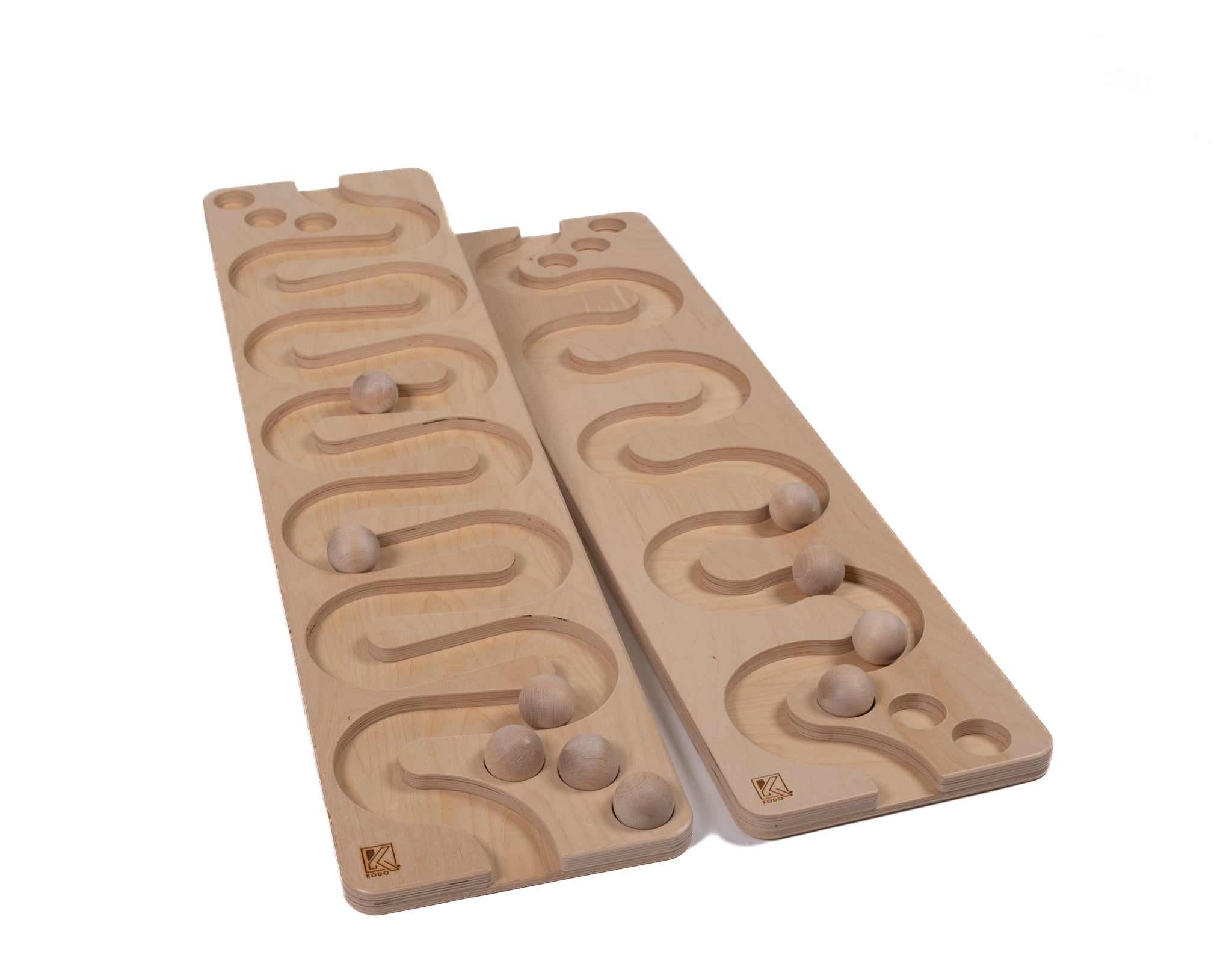
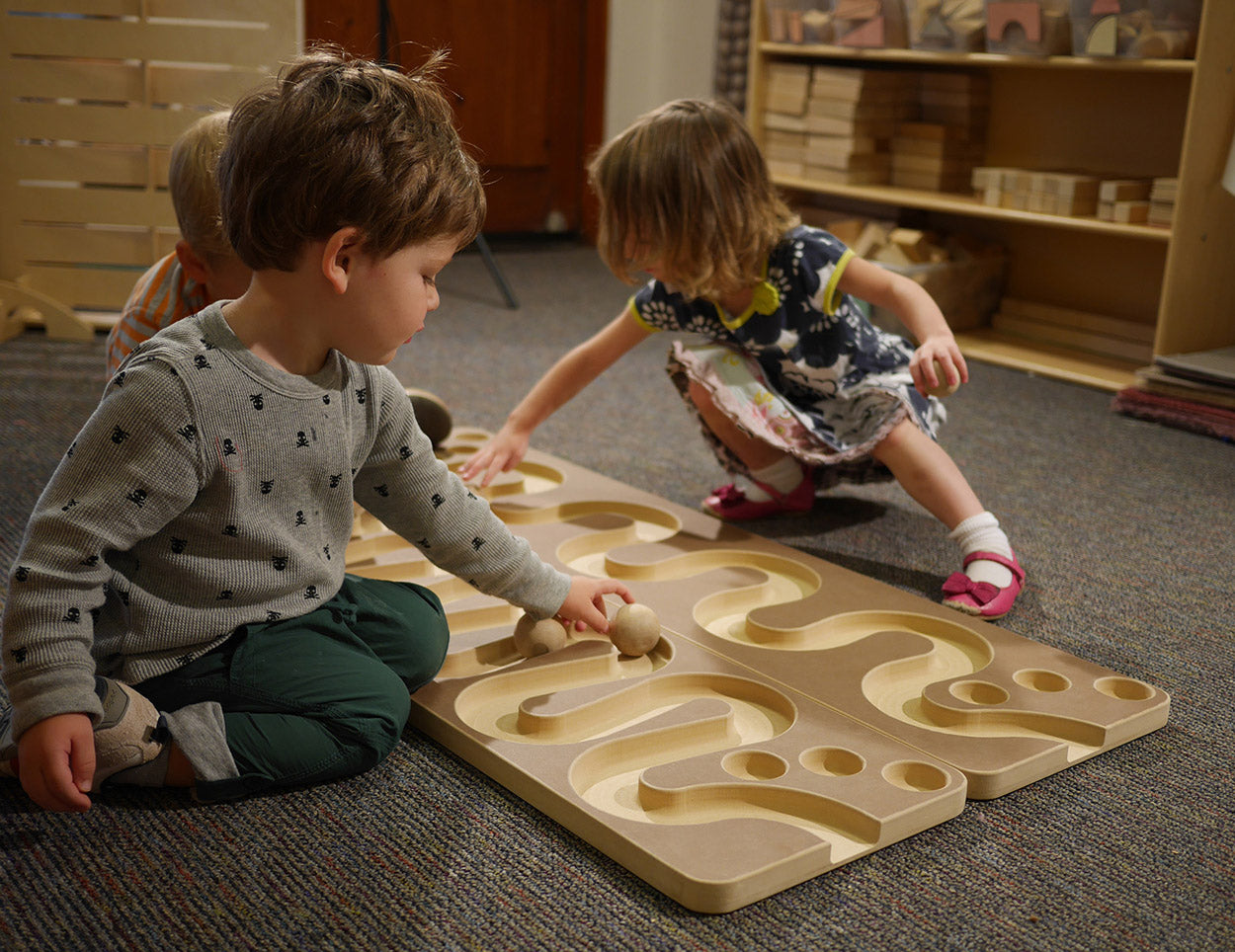
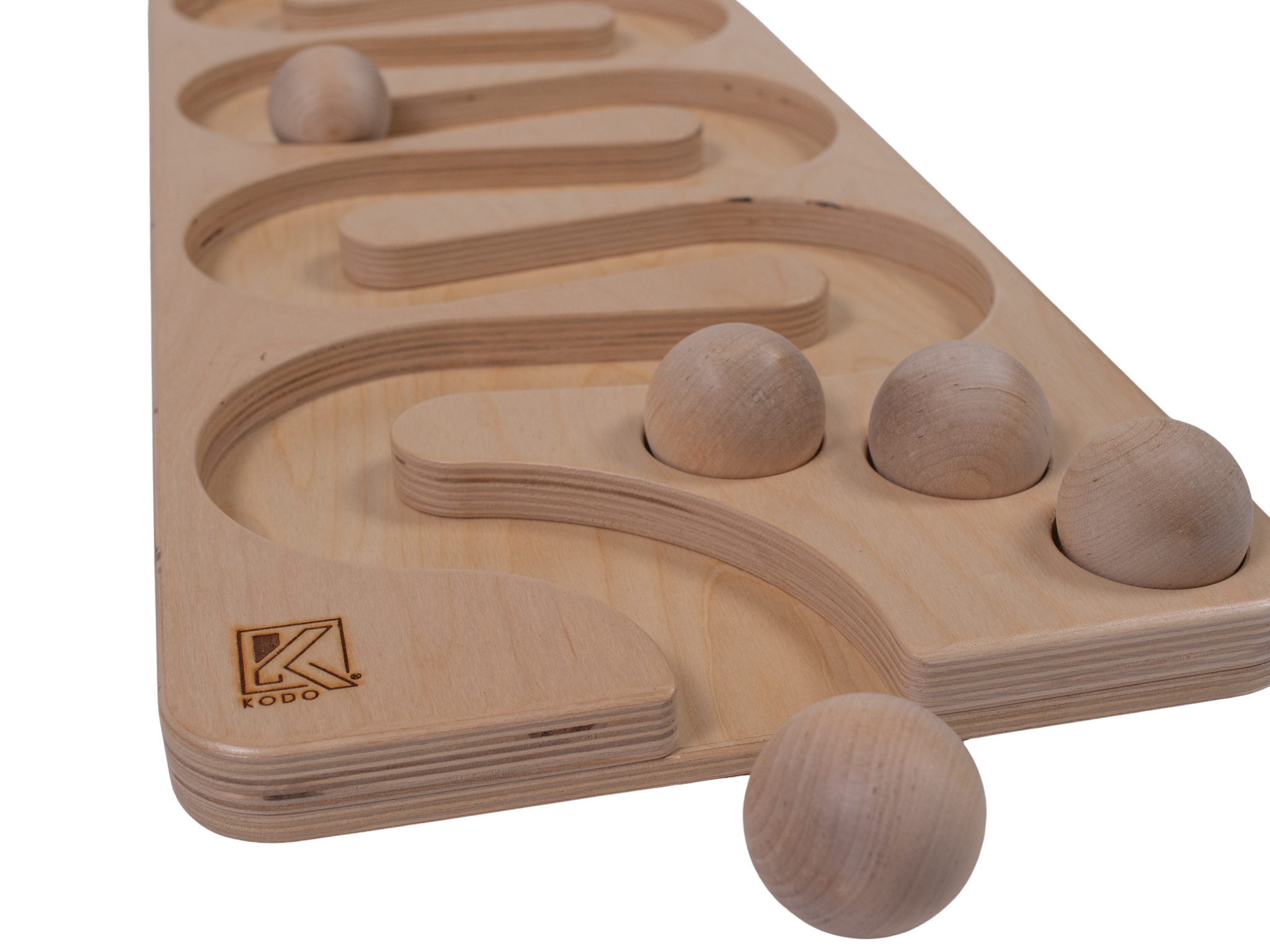

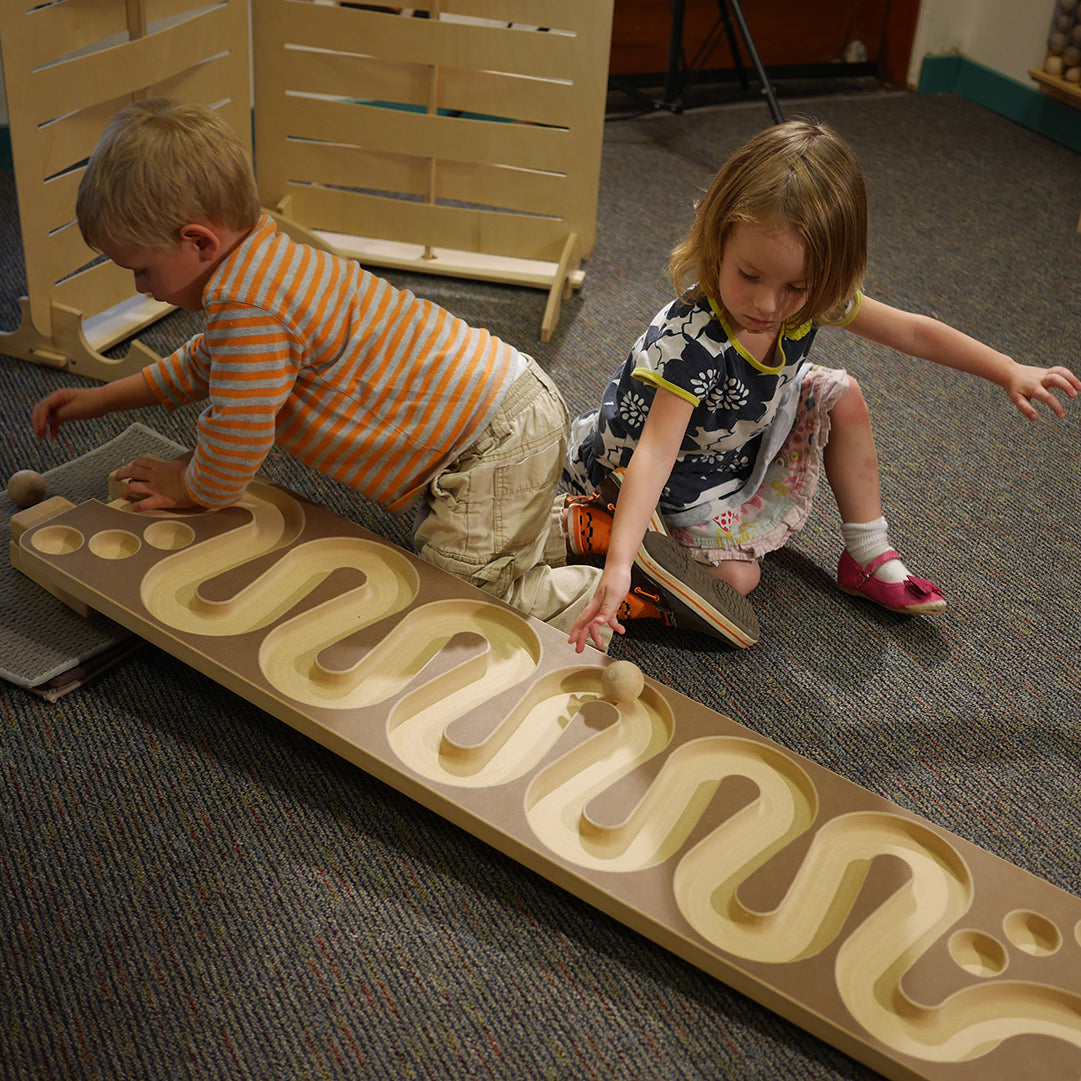
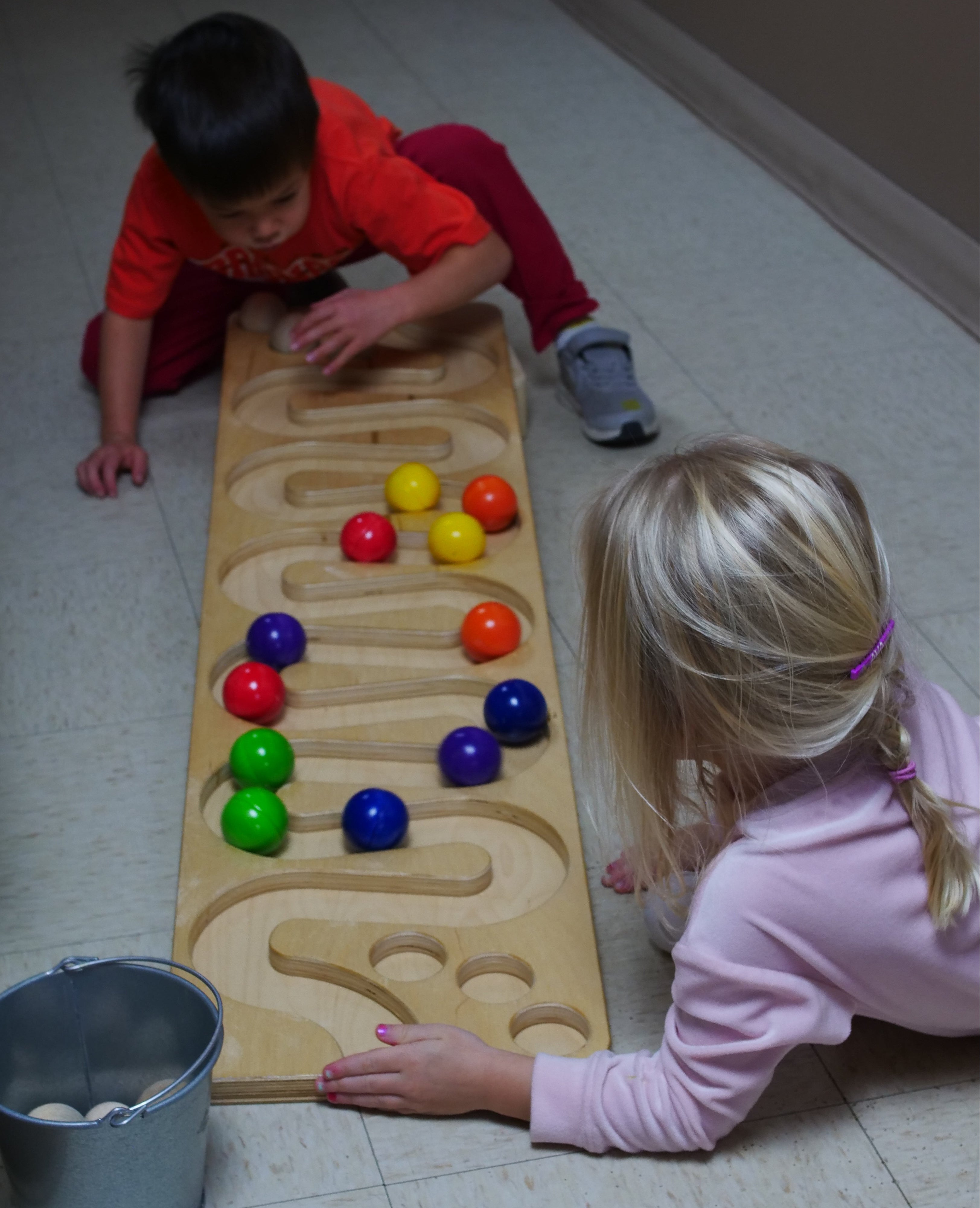
Toddler Ball Run
SKU: 100167
Description
As they roll balls down ramps and around curves, toddlers learn about the principle of cause-and-effect. This STEM learning set creates hours of fun while little ones develop their motor skills and hand-eye coordination. Each run has a slightly different design, so young learners can see the differences between each path as they explore. Made from durable wood, both the balls and the ball run will stand up well under many years of use. This set teaches concepts of gravity, acceleration, speed, and momentum, all through active play. Because play is open-ended, toddlers are enticed to keep interacting with, and learning from, the materials. This set works well in a STEM area of the classroom where hands-on learning is encouraged. Set includes:
- Two ball run sets
- 10 2" natural wood balls
Appropriate for ages 18 months and up
Ideas & Concepts
- Invite your kids to make a trap or box to catch the ball at the end of the run.
- Changing elevation affects distance - Ask - how to get the ball to travel to the end of the room or all the way down the hall. Adults will likely want to solve this problem for their children but resist the urge to interfere rather than let the children’s trial and error drive the play for days! You’ll be glad you did, as the opportunities to make observations and assessments concerning critical thinking, logic, and reasoning will unfold before you.
- Try placing the two ball runs next to one another with some large stacking materials nearby. Ask how to get the balls to reach the end of the runs at the same time. This is tricky, but given enough time to experiment, your toddlers will learn that adjusting the elevation will change speed.
Complete it with these